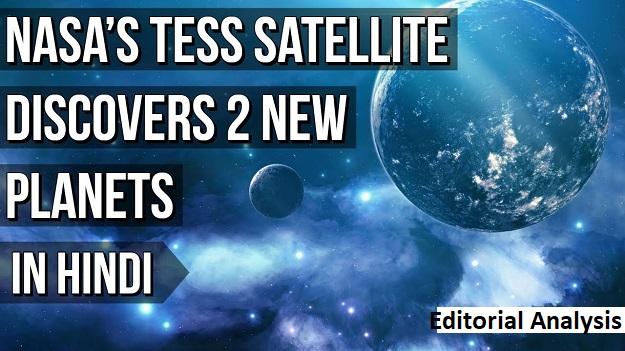Discovery Of Two New Planets
TESS ( Transiting Exoplanet Survey Satellite )
NASA’s Transiting Exoplanet Survey Satellite is an all-sky survey mission that will discover thousands of exoplanets around nearby bright stars.
TESS launched April 18, 2018, aboard a SpaceX Falcon 9 rocket.
TESS is launched by NASA.
TESS aims at finding planets beyond our solar system not within.
NOTE
Pluto can be added again.
Current planet 8
If Pluto added then 9
A planet-hunting orbital telescope designed to detect worlds beyond our solar system discovered—two planets.
TESS has made its first new discovery of two new planets.
NASA’s Transiting Exoplanet Survey Satellite, better known as TESS, made an early discovery of “super-Earth” and “hot Earth” planets.
Both are Exoplanet.
1. The discovery of Pi Mensae c, a “super-earth” planet 60 light-years away orbiting its sun every 6.3 days.
A super-Earth is an extrasolar planet with a mass higher than Earth’s, but substantially below the masses of the Solar System’s ice giants, Uranus and Neptune, which have masses of 15 and 17 times Earth’s, respectively.
2. The discovery of LHS 3844 b, a “hot-earth” planet 49 light-years away that orbits its sun every 11 hours.
Very close to the sun and have a very high temperature as compared to earth. It is difficult for the planet to survive.
What Is an Exoplanet?
All of the planets in our solar system orbit around the Sun.
Planets that orbit around other stars are called exoplanets.
GOLDILOCKS ZONE
The Goldilocks Zone refers to the habitable zone around a star where the temperature is just right – not too hot and not too cold – for liquid water to exist on a planet.
Liquid water is essential for life as we know it. Where we find liquid water on Earth we also find life.






















 WhatsApp
WhatsApp